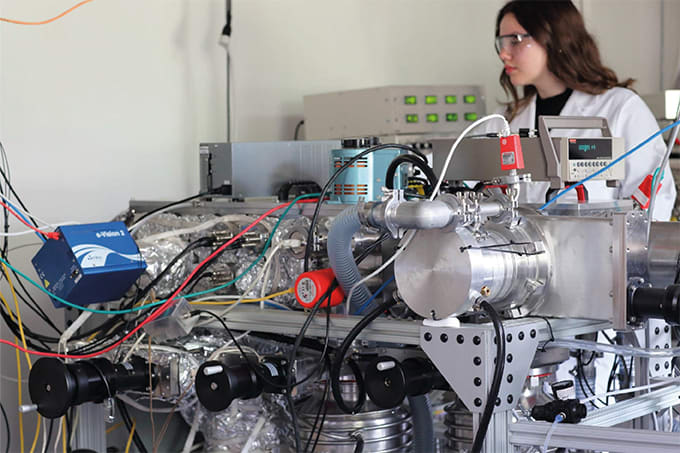Andreas Seidel-Morgenstern – a PREP 2015 Scientific Advisory Committee member – won the 2015 Humanity in Science Award (www.humanityinscienceaward.com) along with Peter Seeberger for his part in a new process to manufacture lower cost anitmalarials. By coupling flow chemistry with advanced chromatography methods, Seidel-Morgenstern and Seeberger were able to manufacture artemisinin combination therapies (ACTs) – the most effective drugs to treat malaria – from plant waste material, air and light. The new process is currently being implemented in a pilot plant in Vietnam and produces an active pharmaceutical ingredient with a purity of greater than 99.5 percent. Look out for the full story behind the project in an upcoming issue.

Seidel-Morgenstern, who is director of the Department of Physical and Chemical Foundation of Process Engineering at Max-Planck Institute in Magdeburg, highlights aspects of the work: “An efficient isolation of a continuously synthesized target component requires the development of advanced separation processes. Considering the reactor effluents generated in Peter’s group as pseudo-ternary mixtures (an impurity fraction 1, the target, and an impurity fraction 2), artemisinin and artesunate could be purified with our process using several periodically operated chromatographic columns. The approach can be applied to also solve other challenging separation problems.” And though the chemistry and engineering involved in the project are both spectacular and innovative, the potential impact of the resulting complete process is spellbinding. Peter highlighted in his acceptance speech that 660,000 people die of malaria each year – and 90 percent of those are children under five. In other words, it is a disease of poverty. Seidel-Morgenstern will give a lecture in a special keynote series at PREP 2015 to honor the late, great Georges Guiochon – a preparative chromatography visionary. Seidel-Morgenstern offers a brief sneak preview: “I will describe both my time in Knoxville with Georges and the direct connection between the courses of adsorption isotherms and the shapes of elution bands. This problem brought me to Knoxville and still keeps me busy!”
Meanwhile, researchers from the Austrian Centre of Industrial Biotechnology and the University of Natural Resources and Life Sciences Vienna have developed a continuous purification method for production of lower cost recombinant antibodies from clarified CHO cultures (1). The team converted a two-stage batch precipitation-based antibody capture step to continuous mode using tubular reactors. There is no protein A capture step; instead, the precipitation process uses calcium chloride and ethanol – both inexpensive reagents. “In essence it is a continuous precipitation, but it is also very adaptable and could be a platform process,” says Alois Jungbauer, one of the authors of the study, and also a member of both the PREP 2015 and ISPPP 2015 Scientific Advisory Committees. When Jungbauer and his team first started investigating continuous processing, they hit a dead end. “The time was not ready for continuous manufacturing and all of my colleagues from the pharma industry told me that this technology is not relevant. But now things are changing.” Jungbauer believes that the team’s continuous principles can compete with conventional protein A capture steps in terms of yield and speed, and they’ve now done studies with several antibodies using feedstock from pharmaceutical companies. “Protein A is still the workhorse in the biopharma industry for antibody manufacturing,” says Jungbauer. “It works very well and it is a complete, mature technology. It is the benchmark that any new technology has to beat.”
The big question is: can you use Protein A to bring antibody production down to less than $10 per gram? One thing is certain: lower manufacturing costs = increased access to medicine. Jungbauer, alongside Giorgio Carta and Alan Hunter, will be giving a workshop at PREP 2015 on preparative chromatography for biomolecule purification. And Mark Schure will tackle multidimensional LC for bioseparations at ISPPP. PREP 2015 (the 28th International Symposium on Preparative and Process Chromatography) will take place July 26–29, and ISPPP 2015 (the 35th Symposium and Exhibit on the Separation and Characterization of Biologically Important Molecules) will take place July 29-31, both at Loews Hotel, Philadelphia, PA, USA.
For more information, visit:
prepsymposium.org (PREP 2015) www.isppp.org (ISPPP 2015)




